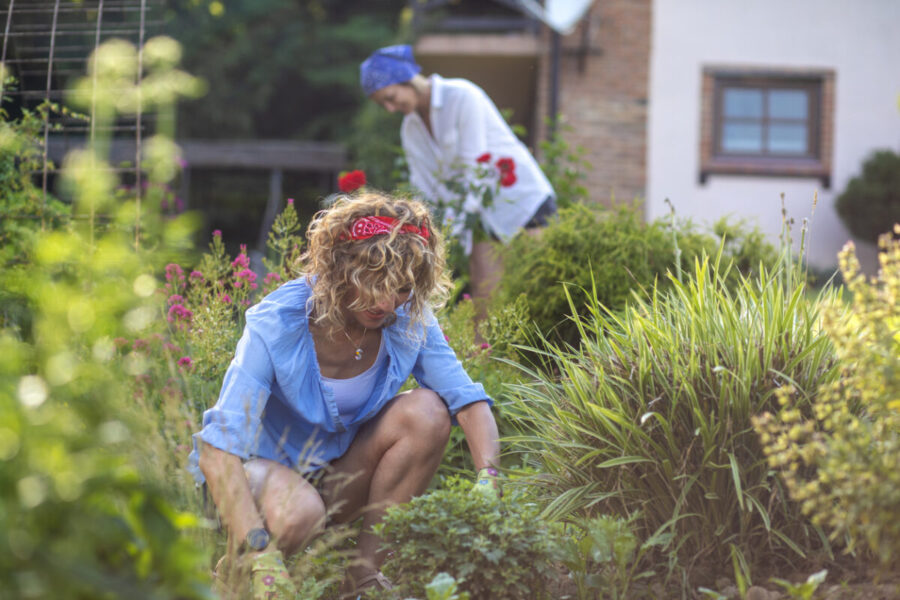There are some obvious cost savings for anyone who decides to start growing a garden. You can buy a package of seeds for less than a few dollars. You can recoup that cost the first time you eat the fruits of your labor, literally. From there on out you’re saving money on produce. And if you prefer to buy organic fruits and vegetables you could end up saving hundreds in just one season.
That’s reason enough to start growing a garden. But there are a lot of other good reasons to grow fruits and vegetables at home. In addition to reducing your monthly grocery bill, you could also decrease your utility expenses. Plus, growing your own food is good for the environment.
Here’s a closer look at all the ways you can benefit from growing a garden this spring.
Direct Energy Savings From Gardening
Gardening is one of the healthiest hobbies a person can have. Not just for themselves and family, but also for the local community and beyond. This holds true, even if you look at it strictly from an energy consumption perspective.
Reducing Energy Use at Home
Some hobbies use energy and other hobbies reduce energy use. Gardening falls into the latter category. The sun provides light and a cool breeze in the shade is free climate control. The only power that’s needed comes from the gardener who’s putting in the physical labor.
If you weren’t outside gardening, there’s a good chance you’d be indoors doing something that requires electricity. At the very least you’d probably have the HVAC system going at a comfortable temperature. Even if you just spend one or two hours a week gardening the energy savings will add up. Plus, it may encourage you to spend even more time outdoors around the plant life.
Lowering Your Carbon Footprint by Reducing Collective Energy Use
There are also a number of ways that gardening indirectly saves energy. In particular, gardening reduces energy consumption during the agriculture and transportation phases of food production. You might not see the difference on your energy bill, but it will help you lower your carbon footprint and reduce energy demand collectively, which is great for all energy consumers.
Less Demand and Energy Use for Food Growers is Good for Us All
If everyone with the ability to grow a garden did so, farmers would have to grow a lot less fruits and veggies. Today’s farms require a lot of energy to operate. Agriculture alone accounts for 21% of the energy used in food production. When major energy users have to use less electricity it helps everyone by reducing strain on the electric grid. That means there’s less chance of a rolling blackout or brownout.
Plus, there’s a lot of food waste already. The Food and Agriculture Organization of the United Nations has found that around one third of the food that’s produced is wasted or lost. In other words, it doesn’t get eaten. That wasted food accounts for 38% of the energy that’s used within the food system. Less food needing to be grown by farmers means less food will be wasted.
No Travel Time for Getting Food to and From the Grocery Store
One of the most significant environmental benefits of growing your own food is dramatically reducing the carbon footprint for produce. Getting fruits and vegetables from the farm to your plate often requires a lot of energy if produce is being shipped many miles to a grocery store. You then have to hop in your vehicle and drive to the grocery store to get the produce.
All that travel time adds up and increases the carbon cost of consuming fruits and vegetables. When you grow your own fruit and vegetable garden only manpower is needed to walk outside and grab what you need.
Every mile that isn’t driven keeps pollutants out of the environment and reduces demand for oil and gas, which helps keep the cost per gallon from going up.
The Importance of Knowing and Growing in Your Plant Hardiness Zone
It’s possible that you could put in a lot of time and personal energy into a garden and not see much come out of it. Farmers are the first to tell you growing plants isn’t easy. For one, you can’t control the weather. But beyond that, there are a lot of things novice gardeners get wrong. One of the biggest mistakes is not taking the plant hardiness zone into account.
- They are more likely to survive, period.
- They require less maintenance.
- They’re easier to find and usually less expensive.
Here’s a quick example. If you live in southern Florida, planting a banana tree is a great idea. It may take time to grow, but you should start seeing edible fruit by the following year. However, if you live in the Los Angeles area a banana tree probably isn’t your best bet. Try an avocado tree instead, because that’s what is native there.
When you plant something the goal is for it to grow and flourish. That’s much easier to do if the plant naturally flourishes in your local environment. Some native plants will even survive with next to no assistance from a gardener season after season.
Put your energy plan on autopilot so you can focus on getting your garden to grow. Fixed rate plans from Major Energy make monthly costs more predictable and make it easier to see the savings when you reduce energy use. Plans are currently available in 10 states across the northeast and midwest.
